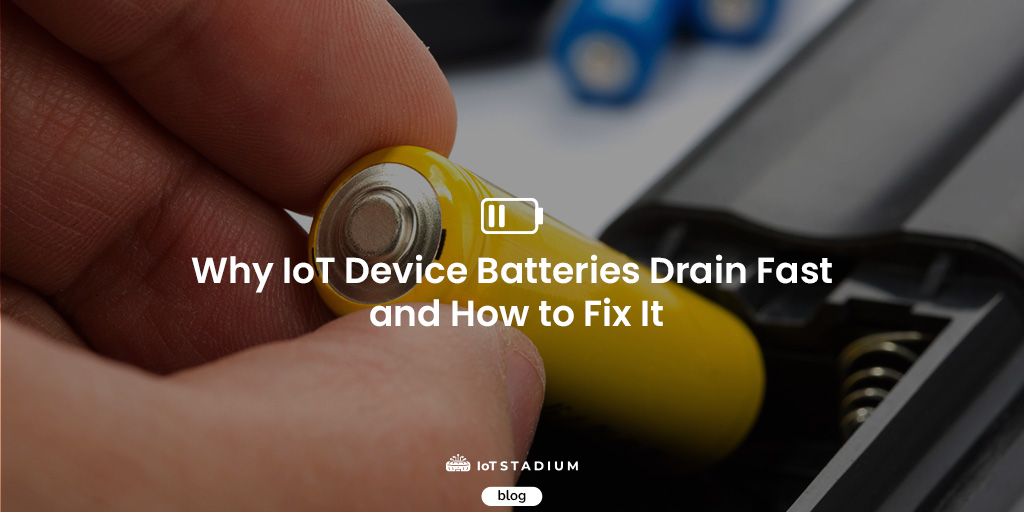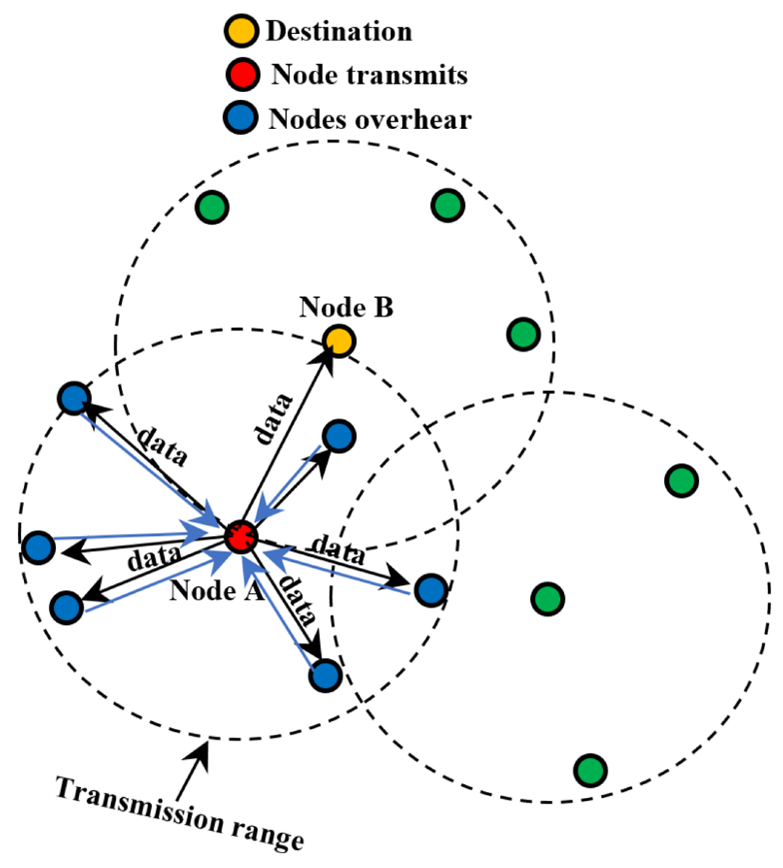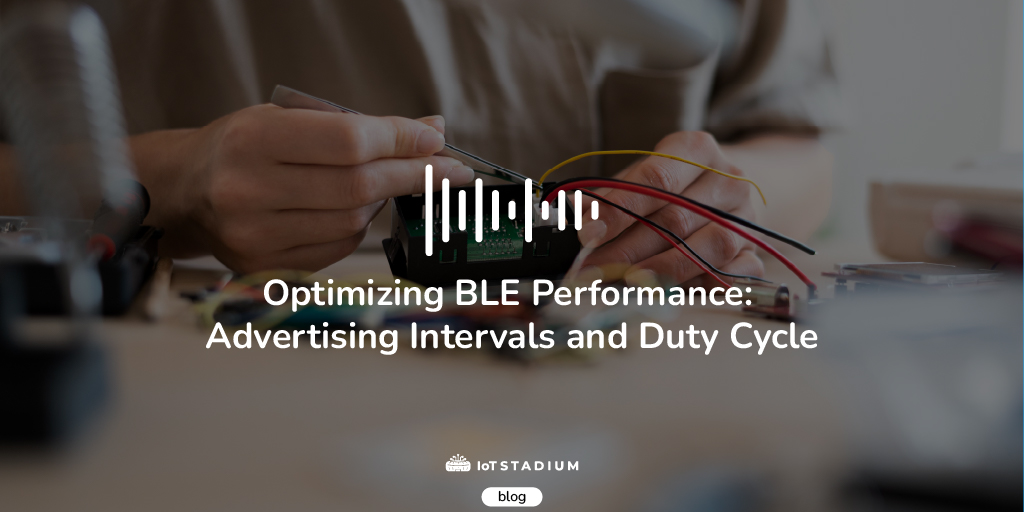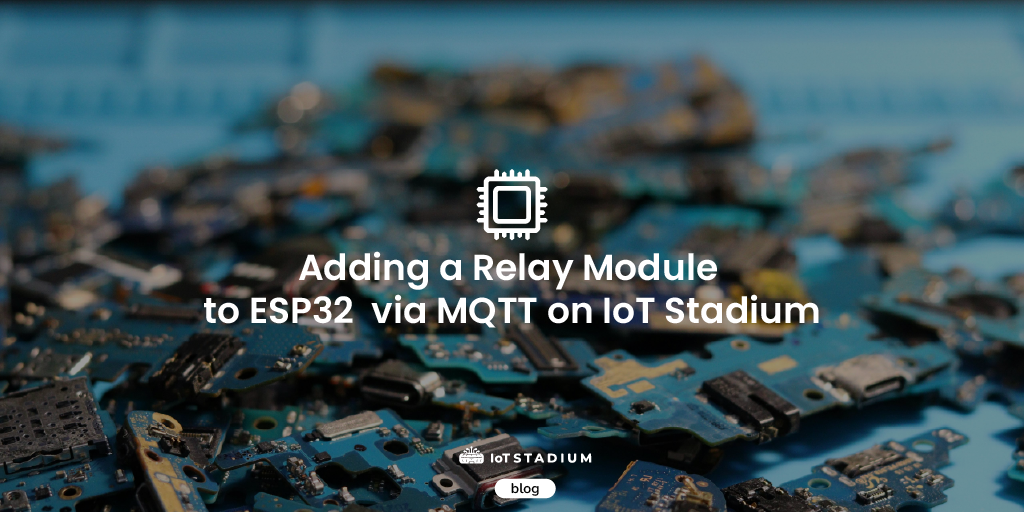You have installed your Internet of Things (IoT) device in several locations. Everything is running smoothly, but a few weeks later, one of your devices is not giving any reports at all. The culprit? Drained batteries.
A very familiar situation, especially for those of us who use battery-powered IoT devices. While the Internet of Things (IoT) helps us automate tasks, monitor performance, and save energy on a system level, the devices themselves still consume power to operate.
It's a tricky situation, where IoT can help us save electricity, but we also face the problem of limited battery life. Understanding why this happens — and how to fix it — is essential for building reliable, long-lasting IoT solutions that truly deliver on their promise of efficiency.
Why IoT Devices Consume More Power Than Expected?
The initial assumption for battery drain is either due to computational processes or sensor workloads in obtaining data. In reality, communication — the process of sending and receiving data — is often the largest power consumer.
From Laith Farhan et al (2021) communication protocols play a major role in battery drain. A significant amount of energy is used to process, transmit, and receive data in order to meet application requirements.
Let’s look at some of the most common ones:
Collision
This happens when two or more data packets reach the same node at the same time. The packets may collide and either get discarded or resent, forcing retransmission that increases both latency and energy usage. Over time, this shortens the overall network lifetime. Multiply that across hundreds of nodes, and what seems like a small inefficiency becomes a network-wide drain.
Overhearing
In dense networks, nearby nodes may accidentally receive packets not intended for them. For instance, when Node A sends data to Node B, other nodes on the same frequency can also receive the packet. Although this data is irrelevant to them, energy is still wasted to process it. The same issue happens when Node A overhears transmissions from its neighbours, which could lead to device always active and listens to others.
source: https://www.mdpi.com/2673-8732/1/3/17
Idle Listening
This occurs when nodes stay in standby mode waiting for potential incoming messages, even if none are directed to them. It often happens in networks with many active nodes and can be aggravated by overhearing. Combined with overhearing, it can create a constant background hum of wasted energy.
Interference
As the number of nearby transmitters increases, so does the likelihood of interference. Nodes must then resend data to overcome failed transmissions, which consumes additional power and congests the network. Multiply that behavior across multiple nodes, and redundancy becomes one of the biggest hidden culprits of energy waste.
Redundant Data
When two or more sensors monitor the same variable and send identical readings simultaneously, redundant transmissions occur. The system still needs to process and forward this data, resulting in wasted energy.
Distance
The farther the transmission distance between nodes, the more power is needed to maintain signal strength. Longer distances can significantly increase the battery load, especially in wireless IoT deployments. The farther the message travels, the harder each device has to “shout,” consuming more battery power in the process.
These factors collectively contribute to faster battery depletion and reduced device lifetime, emphasizing why optimizing communication design and transmission strategy is crucial in any IoT project. Understanding these causes helps engineers identify where power optimization truly matters — from selecting efficient communication protocols to designing smarter sleep mechanisms.
How to Build an IoT Device with Low-power Sleep
Many IoT devices employ batteries or rely on limited energy sources, either due to portability or cheap installation and maintenance costs. As a result, ultra-low power consumption and effective energy management are significant considerations in hardware and software application design, with the goal of lowering overall energy consumption while complying with Quality-of-Service (QoS) requirements. Cutting power starts long before deployment — it starts in design.
Hardware Design
At the hardware level, reducing power consumption begins with selecting energy-efficient components. Microcontrollers (MCUs) designed for low-power IoT applications, such as ARM Cortex-M series or ESP32’s deep-sleep modes, can significantly cut idle power usage.
Other hardware considerations include:
-
- Efficient power regulators to minimize energy loss during voltage conversion.
- Low-leakage components (such as capacitors and sensors) to avoid unwanted current draw.
- Smart wake-up mechanisms using interrupts or sensor triggers, so the system only activates when needed.
Proper hardware design ensures the device consumes minimal energy during inactive periods and wakes up quickly to perform essential tasks.
Software Design
Software optimization is equally important in achieving low-power behavior. The main idea is to let the system sleep as often and as long as possible without affecting its function. Sleep isn’t just a state. It’s a strategy.
Key software-level strategies include:
-
- Sleep scheduling: organizing data transmission and sensing intervals to minimize CPU wake-ups.
- Peripheral management: turning off unused modules (Wi-Fi, GPS, ADC) when idle.
- Event-driven operation: processing data only upon significant change rather than at fixed intervals.
Efficient firmware ensures that the processor spends most of its time in low-power sleep modes while still maintaining responsiveness when needed. Once your firmware behaves efficiently, the next frontier is the system itself — how it adjusts power dynamically.
Dynamic Voltage and Frequency Scaling
Dynamic Voltage and Frequency Scaling (DVFS) is a powerful technique that dynamically adjusts a device’s operating frequency and voltage according to workload demand. When the device is idle or performing lightweight tasks, the system reduces both clock speed and supply voltage, resulting in substantial energy savings.
Implementing DVFS requires hardware and software support, but the payoff is notable: reduced energy consumption without compromising overall performance. This makes DVFS an ideal approach for IoT devices that experience variable workloads or intermittent activity.
Bigger Battery
While optimizing power consumption is essential, increasing energy capacity remains a practical solution. Using a larger or more energy-dense battery can extend the operating life of an IoT device, particularly in remote deployments where replacing or recharging batteries is difficult.
However, this approach should complement — not replace — good power optimization practices. A larger battery helps sustain longer uptime but combining it with smart hardware and software design ensures both efficiency and scalability.
Challenges
Every design choice — from sensor selection to communication protocol — directly influences the overall power efficiency and longevity of the device. The process demands tight coordination across hardware, software, and communication layers, as every design choice—from sensor selection to communication protocol—directly influences overall power efficiency and device longevity.
Energy Efficiency vs. Performance Trade-offs
Achieving ultra-low power operation often forces engineers to compromise between energy savings and computational performance. Techniques such as dynamic power scaling and duty cycling can extend battery life but may reduce processing capabilities or responsiveness, especially in real-time or latency-sensitive applications. For instance, Jorg Henkel et al (2017) highlights that optimizing dependability under strict power constraints requires new architectures capable of maintaining functionality even in low-energy states.
Dependability and Robustness in Energy-Constrained Systems
Ensuring reliable operation with minimal power usage is another significant obstacle. Energy-harvesting systems and low-power components are inherently more sensitive to environmental fluctuations, leading to unpredictable performance. Dependability in such devices depends not only on hardware resilience but also on intelligent energy management strategies that anticipate and adapt to variations in available power.
Communication Overheads and Protocol Optimization
Wireless data transmission is one of the largest contributors to power consumption in IoT networks. Efficient communication protocols, such as BLE or LPWAN, help minimize energy usage but still require optimization in scheduling, packet size, and transmission frequency. Selecting the right communication standard and optimizing message frequency can significantly reduce energy drain, especially in large-scale sensor networks where continuous connectivity is not always essential.
Integration of Hardware and Software Optimization
True ultra-low power design cannot rely on hardware optimization alone. Firmware and application-level strategies—like event-driven processing or edge intelligence—must work synergistically with low-power hardware. System-wide coordination between the computing architecture, software scheduling, and communication layers is essential to sustain both performance and dependability within strict energy limits.
Conclusion
Designing IoT devices with long-lasting battery life isn’t about chasing theoretical perfection — it’s about making smart, balanced choices across hardware, software, and communication layers. Each design decision, from component selection to transmission scheduling, contributes to how efficiently a device can operate in the real world.
True low-power design combines engineering discipline with practical awareness. It requires constant iteration, testing, and adaptation to real deployment environments. While no single solution guarantees perfect efficiency, the combination of low-power components, intelligent firmware, optimized communication, and realistic expectations can dramatically extend a device’s lifetime.
In the end, optimizing battery life is less about finding a one-size-fits-all formula and more about understanding your application’s unique needs — and designing every layer of your IoT system to serve those needs efficiently.

 source: https://www.mdpi.com/2673-8732/1/3/17
source: https://www.mdpi.com/2673-8732/1/3/17
